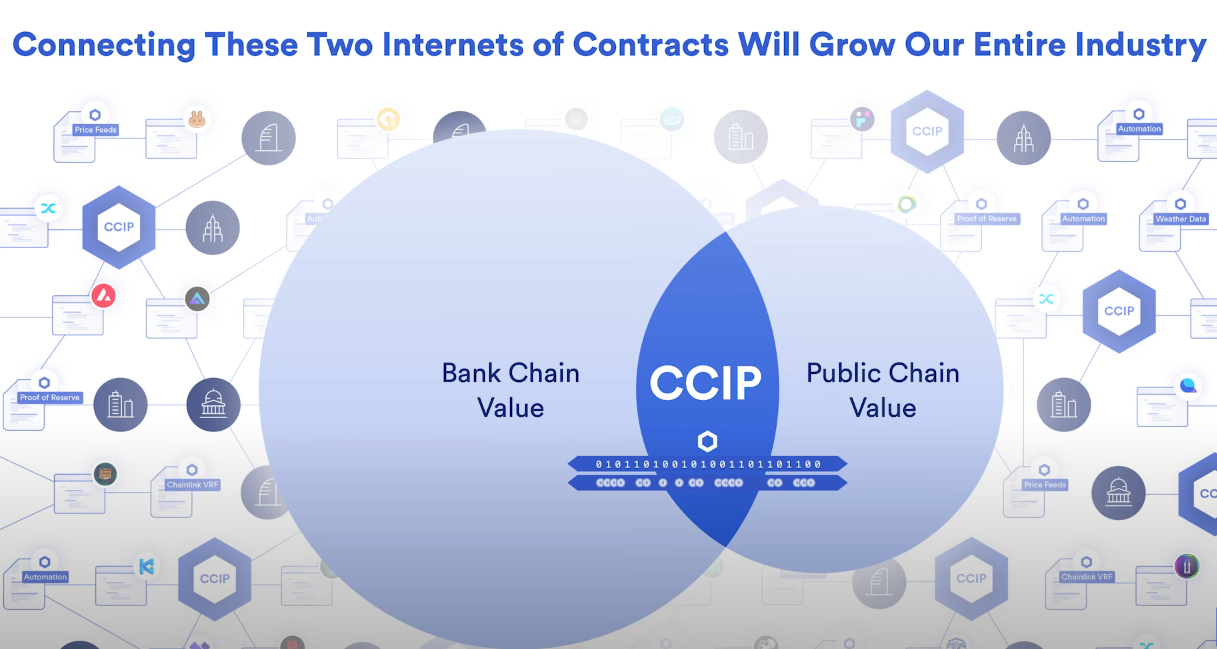Chainlink CCIP Masterclass
 Roq4
Roq4
Last week I had the opportunity to attend Chainlink's CCIP Masterclass, which they organized. Today, I want to inform you about the Cross Chain Interoperability Protocol (CCIP) that Chainlink has recently started to announce, without boring you too much, in a concise manner. So, let's get started without further ado!
As you know, new Layer-1 and Layer-2 solutions are emerging on the blockchain every day, and this creates a new problem, which is the communication between chains.
Blockchains are closed systems, in other words, they are isolated structures. Each network operates in isolation from the others, and this often results in a poor user experience for a multi-chain blockchain user. The limitation you're referring to is commonly known as the Oracle Problem in the blockchain space. This problem necessitates the need for protocols that enable interactions between networks on the blockchain.

Since the primary purpose of this text is to explain CCIP, I won't go into further detail about oracles and the oracle problem. However, those who wish to learn more can find the link to my previously written "Blockchain Oracles Deep Dive" article below,
https://roq4.hashnode.dev/deep-diving-blockchain-oracles
If we look at the acronym CCIP, we can see that it stands for Cross Chain Interoperability Protocol, and the key term for us here is "Interoperability."
Interoperability?
Interoperability is the term used to describe the ability of two or more different blockchains to transfer data or tokens among themselves, access each other's smart contracts, and easily communicate. For example, thanks to CCIP, you can easily convert your USDC tokens on the Polygon network to Ether on Arbitrum, or you can play a blockchain game with a friend on different networks.
Centralized Bridges
As you can imagine, the most common use case for communication between different chains is through central bridges. However, these central bridges require a central intermediary to transfer assets from one chain to another, and when we use these bridges, we have to trust these intermediaries each time. However, these central intermediaries are always vulnerable to attacks (Wormhole Attack, Ronin Attack, etc.).
Solution Chainlink CCIP
Chainlink CCIP can be described as a messaging system between blockchains and the applications within them. This system facilitates communication between two different blockchains (source blockchain and destination blockchain). While providing this communication, it is capable of transporting the desired data and tokens from the source blockchain to the target blockchain.

When Chainlink CCIP connects blockchains, it uses different lanes for each of them. These lanes are specific to each blockchain and are unidirectional. For example, when a message is sent from blockchain A to blockchain C, the A=>C lane is used, and when a message is sent from blockchain C to blockchain A, the C=>A lane is used.

At this point, another important question to ask is how CCIP knows which lane to use and ensures that it doesn't transfer our message to a different blockchain than intended. The answer is actually quite simple: CCIP has a unique chain selector key for each blockchain within it. This means that, for example, when we want to make a transfer to the Optimism Mainnet, we provide the key specific to Optimism as input in our smart contract, thus preventing any potential confusion.

Additionally, Chainlink CCIP, unlike central bridges, operates with decentralized nodes and does not require an intermediary. As we know from decentralized systems, even if one node is malicious, other nodes can penalize that malicious node.

My Thoughts on Chainlink CCIP
While Vitalik may argue that the future lies more in multi-chain solutions due to security concerns, in my opinion, cross-chain interoperability plays a crucial role in providing users with a better experience within the current blockchain ecosystem, especially considering the increasing importance of Layer-2 solutions in the future. On the other hand, let's consider another scenario where we assume that banks become more interested in this sector in the coming years and start launching their own blockchains due to regulatory processes. In such a situation, CCIP appears to be the most logical choice for the existing networks to communicate with these new blockchains.

In summary, I am quite bullish due to both my confidence in Chainlink and my belief in the future of CCIP. However, I'm curious to hear your thoughts and comments as well!
Subscribe to my newsletter
Read articles from Roq4 directly inside your inbox. Subscribe to the newsletter, and don't miss out.
Written by
